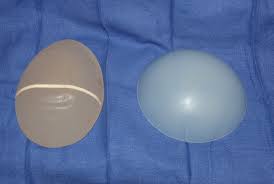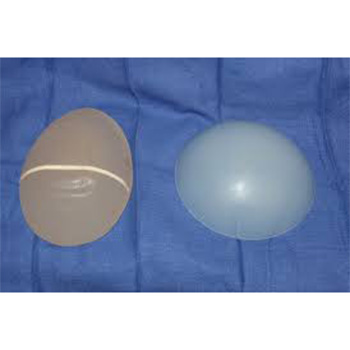When fat injections are not an option for buttock augmentation, or have not been successful, implants are the sole remaining treatment option. When choosing buttock implants there are three fundamental decisions a patient has to make, implant size, implant shape (style) and tissue pocket location. While pocket location and implant size have a somewhat fixed relationship (an intramuscular location can only accommodate smaller implant sizes), the shape of a buttock implant is not controlled by its volumetric size.

While the concept of shape in buttock implants has merit, it is important to realize that looking at the implants in hand or laying on a table does not completely represent what may happen in a tissue pocket. The pocket dissection for either the intramuscular or subfascial locations are not identical and, as a result, neither are the actual tissue pocket locations. The intramuscular pocket, by definition, sits higher than a subfascial pocket in most patients. This is because the gluteus maximus muscle mainly covers the upper half or two-thirds of the buttocks and not the entire buttocks. In contrast the subfascial pocket does not have these restrictions and can be extended much lower. (and often is) This is also why the subfascial pocket can accommodate much larger implant sizes.
As a result of these tissue pocket differences, buttock implant shapes may not be reflected completely externally. In the subfascial pocket the differences between round and oval buttock shapes is more easily seen with a thinner soft tissue cover. In the intramuscular pocket, however, the thickness of the muscle and the smaller size of the implant may not be as substantial as seen when viewing the implants out of the body.
While it is true that the ideal aesthetic standards of the buttocks is more oval shaped than round, that does not mean that every patient desires it so. Nor does it mean that every patient can satisfactorily achieve it given the restrictions of the tissue pocket selection and implant size.
There is also the effects of tissue relaxation over time. This is well known in the buttocks with potential implant drift inferiorly well after surgery. This is most manifest in the subfascial pocket location where an implant that looks good initially can drop too low. This is much more limited in the intramuscular pocket.
Choosing between a round vs oval buttock implant is not quite as simple as looking at the implants by themselves. Numerous other factors need to be considered to determine whether the potential risks of a shaped implant (malrotation, vertical buttock elongation) are better than that of a round implant.
Dr. Barry Eppley
Indianapolis, Indiana



